KI7F.COM
Ham Radio Pages

 History of My Amateur Radio
Career.
History of My Amateur Radio
Career.

Here is a brief history of my operating career, interspersed will be photos of equipment I have owned over the years (in no particular order)
Also at the bottom of the page will be information on my current and future activities!!!!
My interest in the field of radio goes back to the mid 1960s when I was 13 years old and lived in a small lumber mill town in Oregon called Philomath with my grandparents. My grandfather told me how distant, foreign countries could be heard on the shortwave bands on his old 1937 Philco model 37-610Table radio. See photo below of what that old 1937 Philco 37-610 radio looked like.
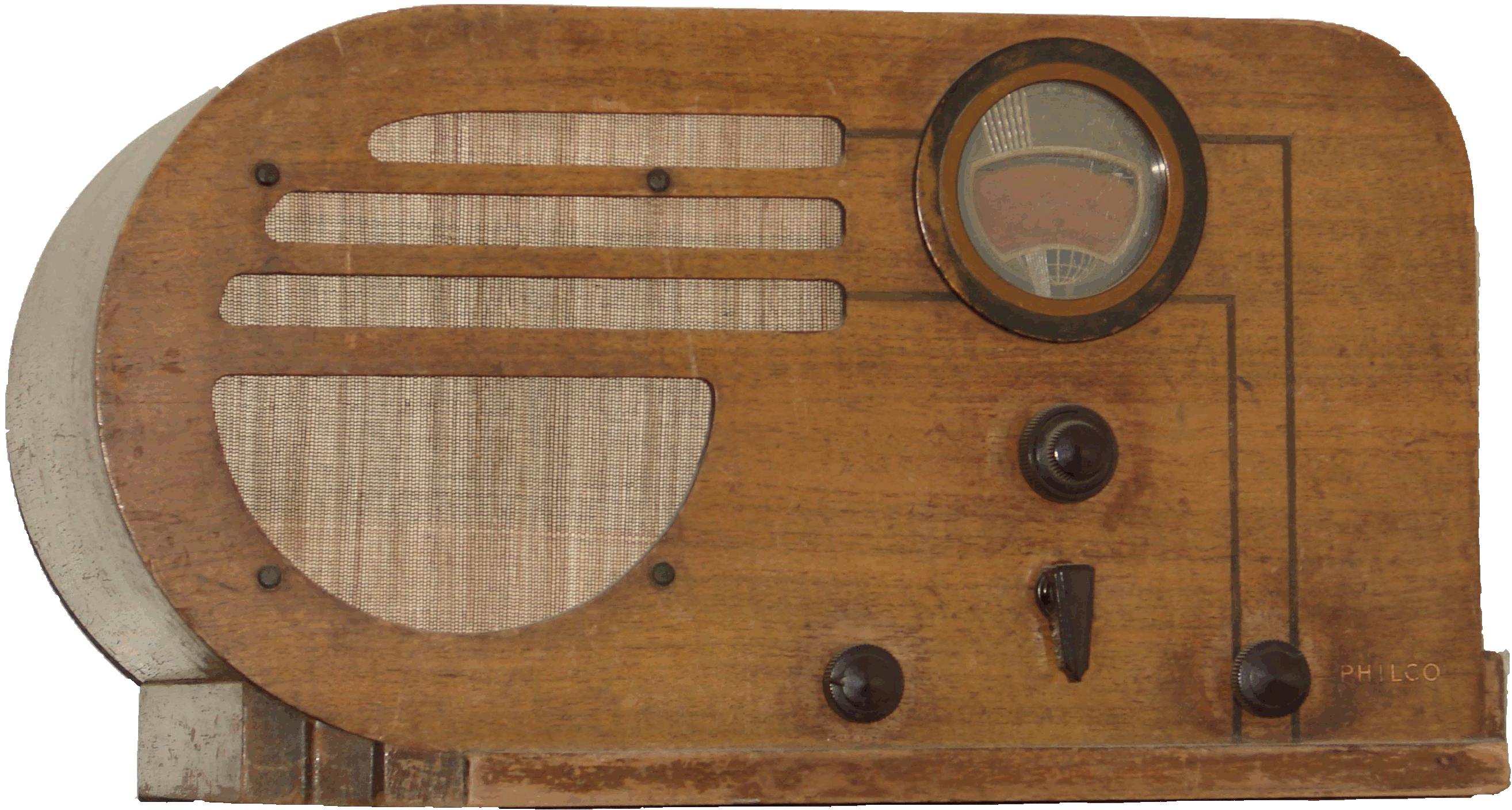
Above is a photo of a 1937 Philco model 37-610T radio I have in my collection that was found by KC7HUB on Ebay. This one is currently not working. It had several shortwave bands on it. My grandparents who I lived with in the State of Oregon in the 1960's owned one and I used this radio to tune around on the shortwave bands and listen to international shortwave broadcasting radio stations as well as ham radio operators. Back in the 1960's. most ham radio operators were using AM mode on voice transmissions instead of SSB and were easy to tune in. This radio had a good fidelity sound when listening to AM stations.

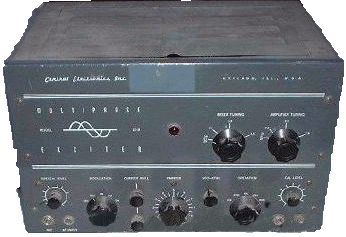
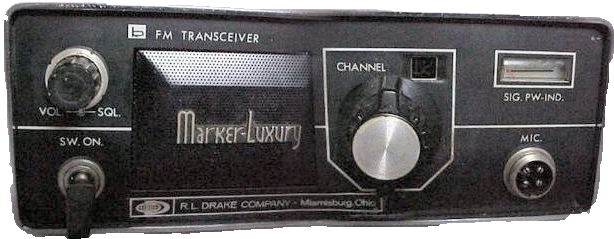

Left to right:
Clegg 28, Central Electronics 10B, Drake ML2, Sony ICF7700DA
So, I eventually began to tune around the shortwave radio bands on that old Philco and tuned across weird noises, radio stations broadcasting in foreign languages as well as Ham Radio operators (Most ham operators used AM on voice mode back in those days and could easily be heard on any multiband radio that had shortwave on it.) , then my interest in radio dropped for a while and I got into rock hounding and gardening, then when I turned 15 years old, I purchased one of those Sears low power toy CB walkie talkies and started to hear conversations coming in from the East Coast and Mid West which I found fascinating and that re-kindled my interest in the field of radio. When I turned 16 years old, I purchased a Knight Kit "Spanmaster" regenerative shortwave radio receiver kit which I assembled and when I had difficulties trying to get the completed kit to work, my grandfather introduced me to an older gentleman whose name was Ted Ward who lived down the street from us and Ted examined the completed kit and found a bad solder joint which he had me to resolder and the radio then worked fine. Mr. Ted Ward told me he was a licensed ham radio operator and his ham radio call sign was W7EPI and he gave me an invitation to have dinner that evening with his family and after dinner he took me into his "ham Radio Shack" and he got on the air and talked to a another ham radio friend of his located up in the state of Washington and then checked into the O.E.N. Oregon Emergency Net, which is a net on 3.980 Mhz . Anyway, Ted began to teach me the basics of radio and electronic theory, gave me some books to study, I watched him build an antenna tuner as well as an H.F. multiband linear amplifier, He helped me learn the Morse code which was required for passing the amateur radio license test, etc. I went to Ted's house every other evening during my summer vacation (1967) and practiced Morse code and discussing radio theory with Ted. Ted bought a new National NC-198 I believe and let me have his old Hallicrafters S-38B general coverage communication radio receiver for me to use and I purchased a used, Hallicrafters HT-40 crystal controlled H.F. CW/AM 75 watt transmitter and Ted helped me build a antenna tuner for it.
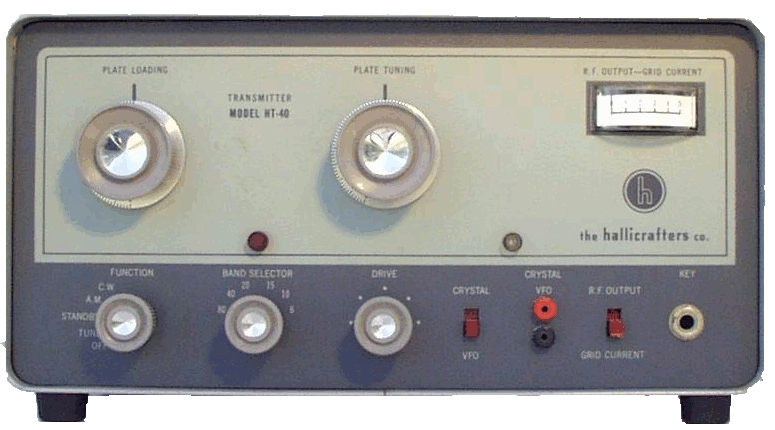
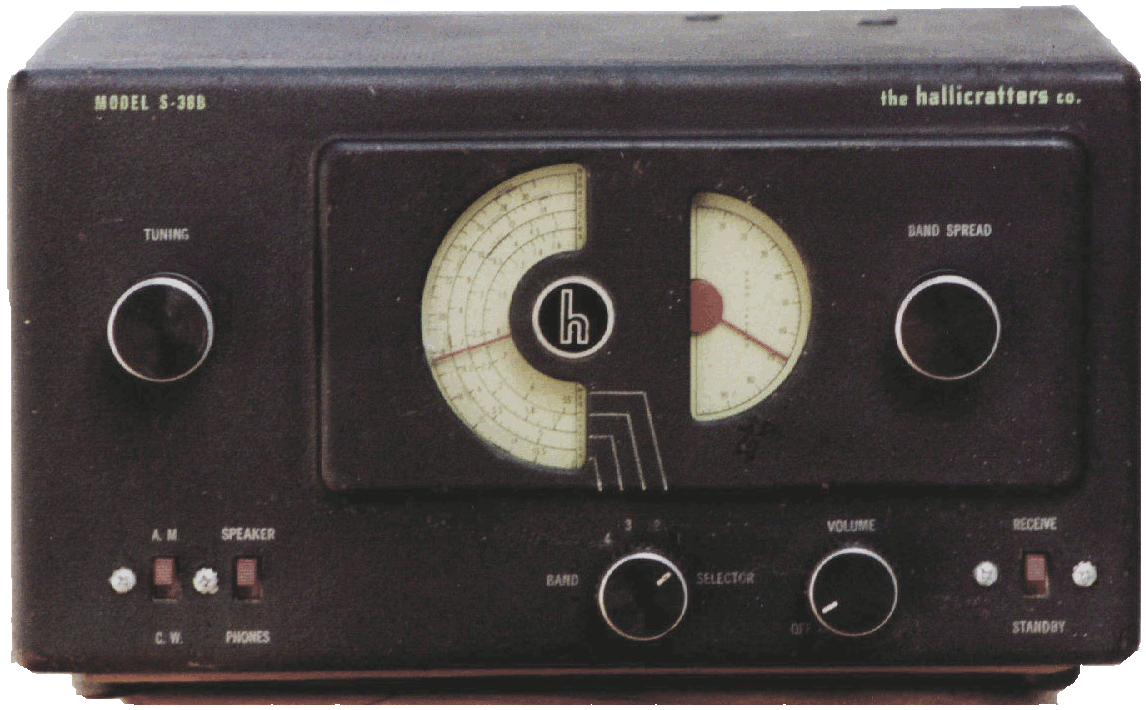
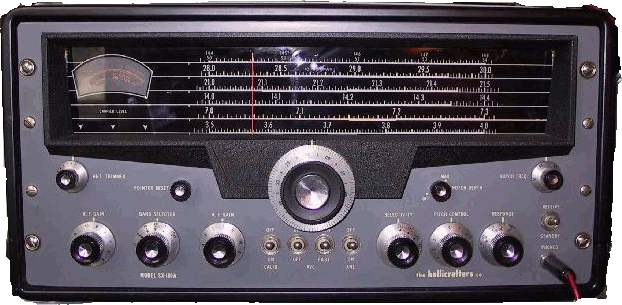
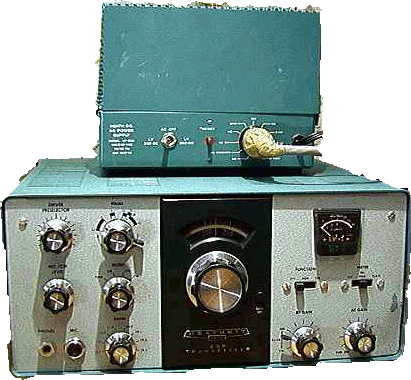
Left to Right:
Hallicrafters HT-40, Hallicrafters S-38B, Hallicrafters SX-101, Heathkit HW-101
Hallicrafters HT-40 CW and AM transmitter and Hallicrafters S-38B receiver the I used in my novice ham radio station when I was first licensed in September of 1967 as a novice license class ham and assigned the call sign 'WN7IOK" As you can see on the HT-40 transmitter, it had a crystal socket and I had to change crystals when I changed frequencies on either 80, 40 or 15 meters. By law, a novice class ham radio operator was not allowed to use a VFO, but had to be crystal controlled and was limited to no more than 75 watts DC input power at the transmitter. I of course used Morse code as a novice class ham and and made radio contact all over the USA, Japan, Russia and many other countries during the period of time I held a novice class ham ticket. HT-40 photo courtesy of Curtis Zeisler and S-38 courtesy of K6QI
![]()

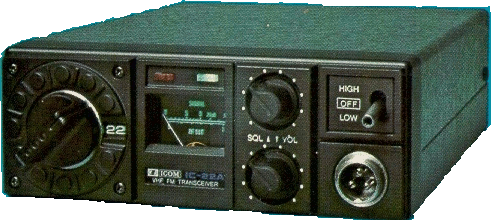
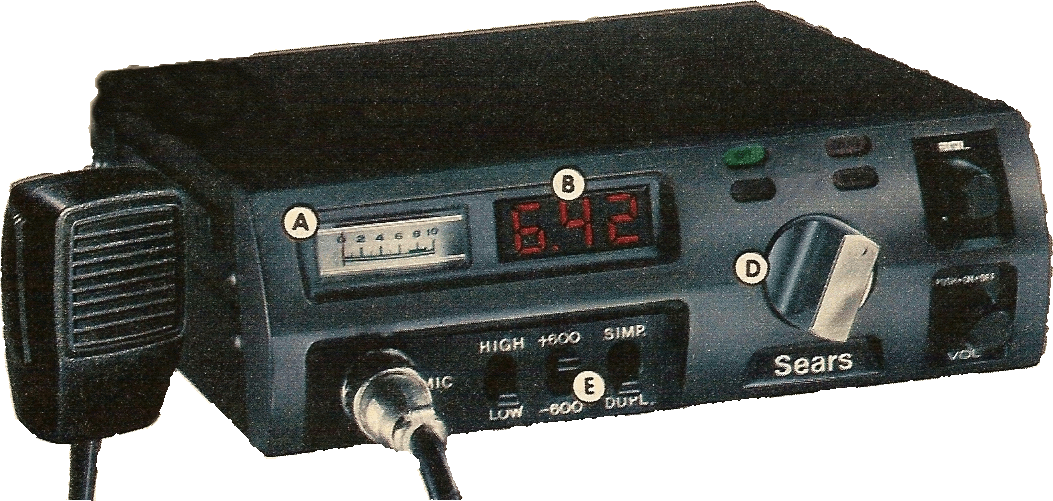
Left to Right:
Icom IC-2AT HT, Realistic HTX 100, Icom IC22U, Sears 2 Meter FM Mobile (Built By Yaesu)
One day, Ted was checking the progress I was making with my Morse code receiving skills and gave me a quick test to see how I was doing and then he stopped me and said, "Congratulations, you just passed the 5 WPM requirements for the "Novice" class license exam. So, he ordered the Novice written theory test from the FCC , which I of course passed, then I waited 30 days and in September of 1967, my Novice License arrived in the mail with the FCC issued call sign of "WN7IOK" Boy, was I ever excited! I called up one of my high school buddies who also attended Philomath High School whose name was Dale Steuve and he also took his exam from Ted Ward, W7EPI and already received his novice license before I did and he received the call sign WN7IMI. Dale lived out in King's Valley North of Philomath, Oregon about 20 miles. I told Dale that I just received my Novice ham radio license in the mail and asked him if he could listen for me on the 40 meter band, so, I told him the frequency then I tuned up my Hallicrafters HT-40 transmitter with a 40 meter crystal plugged in and tuned the 300 ohm feed 40 meter dipole with the antenna tuner for a 1 to 1 VSWR and called Dale, WN7IMI being very careful to be as precise as I could with my Morse code sending on the telegraph hand key and watching the transmitter plate current meter bounce up and down and my hands were really getting sweaty on that Morse code key! ( Nervous?, yea, just a bit as it was my first time on the air with my own call sign and license!) and I sent a "K" which means "Go ahead" and heard my call sign coming back to me followed by Dale's call, WN7IMI, well, at least I knew my signal was getting out! We carried on a 15 mint conversation in Morse code (CW) before concluding our conversation or as we hams call a "QSO".
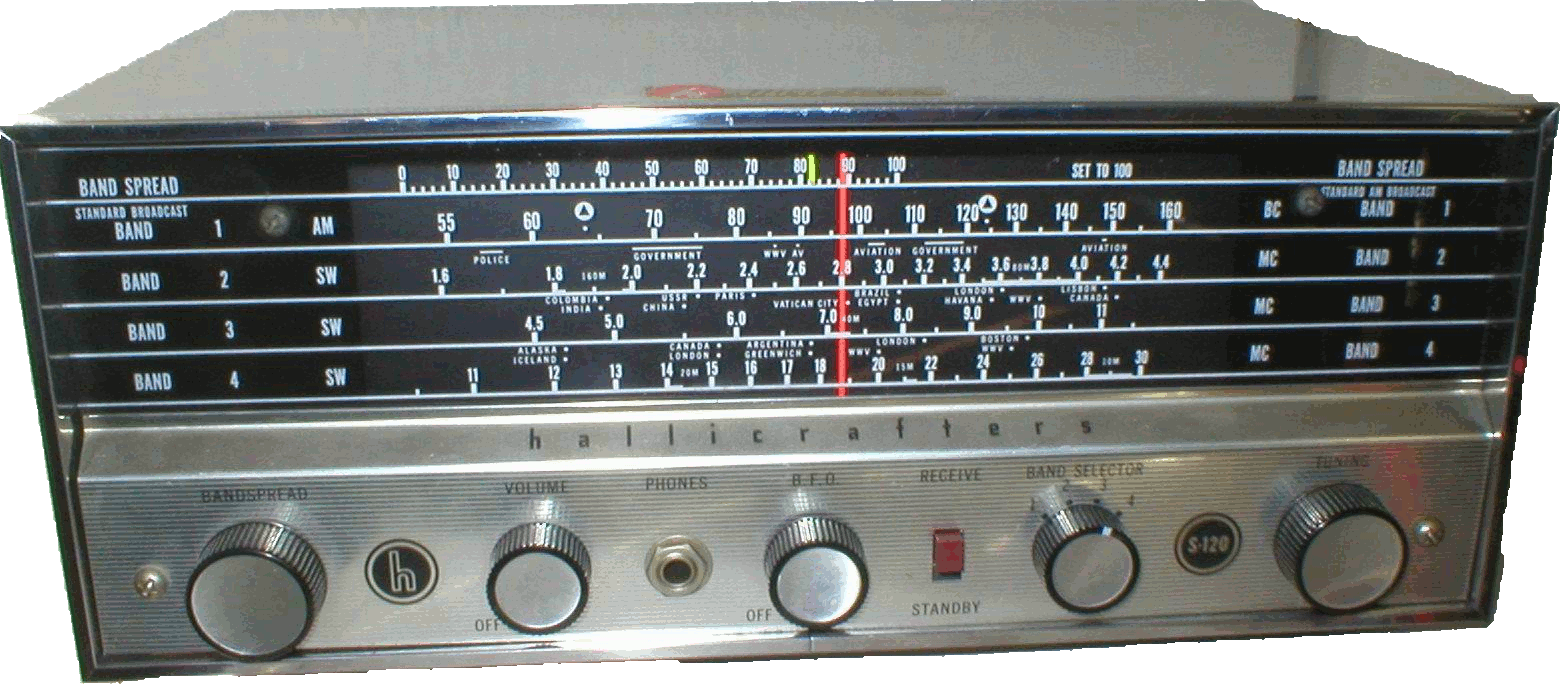

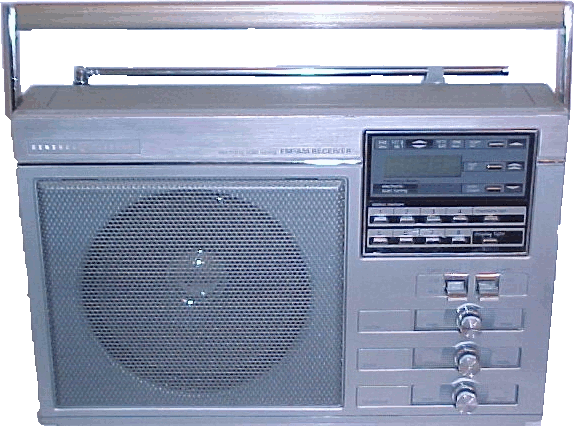
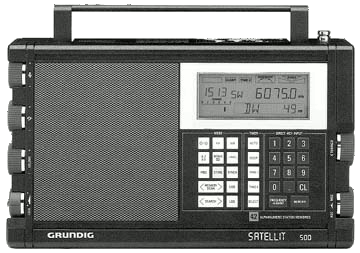
Lest to Right:
Hallicrafters S-120, Galaxy GT-550, GE Superadio Digital Plus, Grundig Satellit 500
For the next few months, I
began to make Morse code (CW) radio contacts with stations all over the
USA, Canada, Japan, Australia, Even ham radio stations in what was then
the Soviet Union and all that time continuing to improve my Morse code
sending and receiving skills.
By the way, the Novice class ham radio license back in the 1960;s only
allowed you to use a maximum power level of 75 watts and the transmitter
had to crystal controlled and you were only allowed to use CW (Morse
Code.) on the 75, 40 and 15 meter bands. (Novices were prohibited to use
voice.) But, I still has a lot of fun during my novice days as a ham!
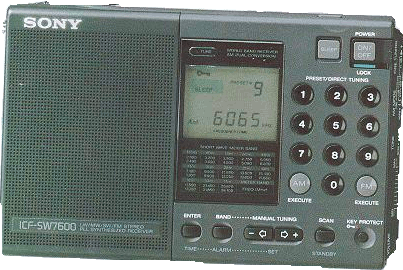
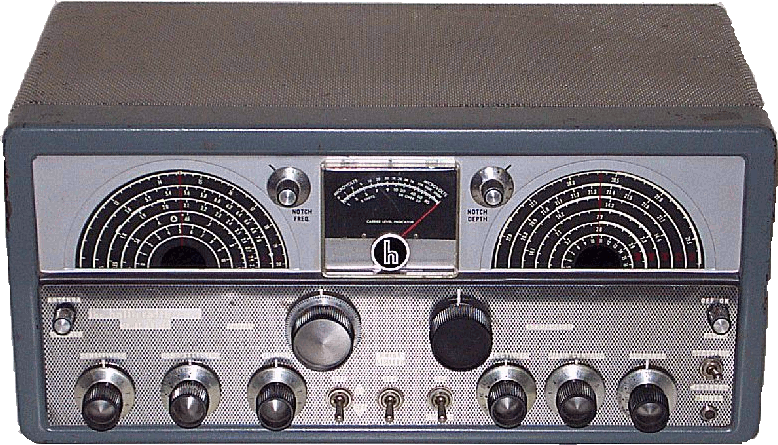
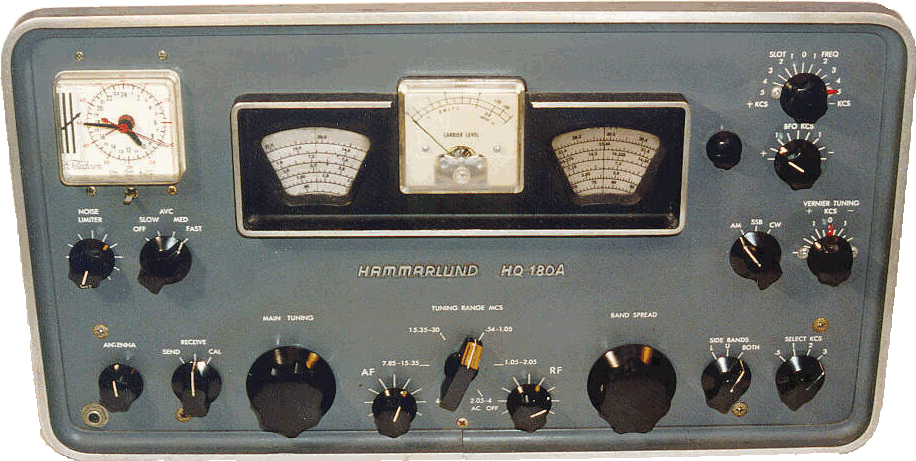
![]()
Left to right:
Sony SW-7600, Hallicrafters SX-100, Hammerlund HQ-180A, Kenwwood TR-2400
Back in the 1960's, there were five different classes or grades of Amateur Radio licenses, The lowest grade was Novice, followed by Technician, then General Class, Advanced Class and the highest grade being Extra Class.
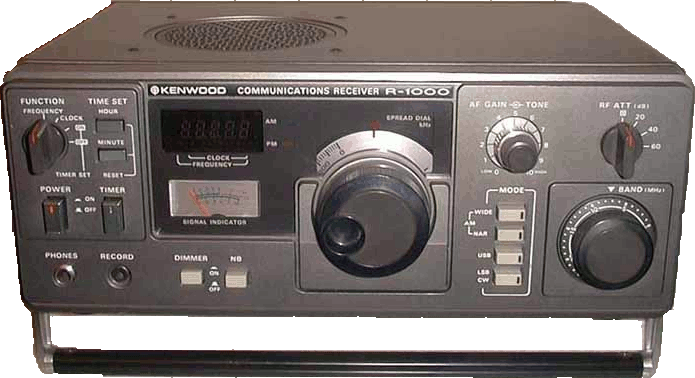
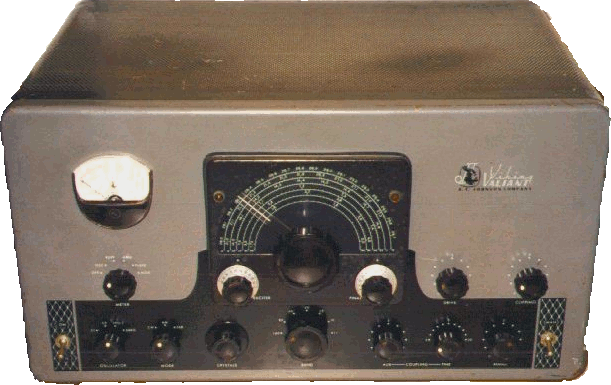
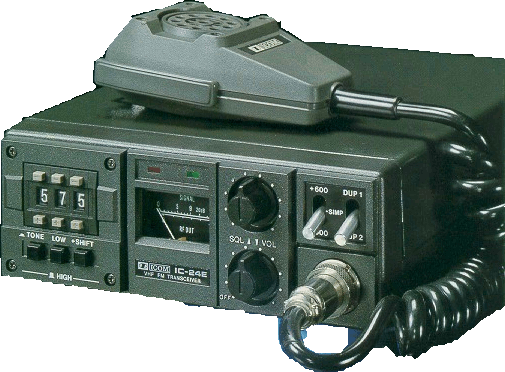
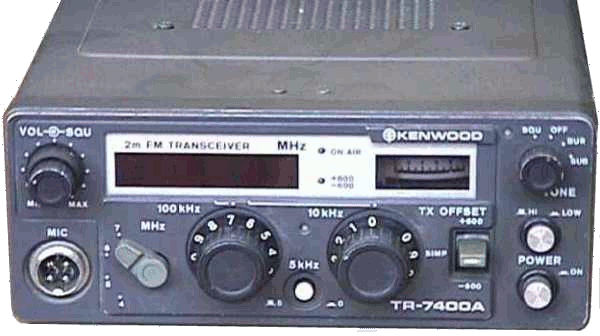
Left to Right:
Kenwood R-1000, Johnson Valiant, Icom IC-24E, Kenwood
TR-7400
During the Spring of 1968, I passed my General Class exam and was issued the call sign WA7IOK and I held on to that call sign till 1977 When I accidently lost that callsign due to a mistake on the FCC 610 form when I was living in San Diego, California just after I got out of the Navy. I was re-issued the call sign WD6DLD, then I moved back up to Corvallis, Oregon in 1978 and received the call sign KA7DHU. I was already a holder of the advanced class license and should have received a call sign reflecting the advanced class license, (KA7DHU and WD6DLD were both Technician class calls back in those days.)
The photo on the left is of my amateur radio setup I set up in an apartment I lived at in Albany, Oregon back in 1979 just after I made my move from the San Diego area back to the State of Oregon. My amateur radio call sign was changed from WD6DLD to KA7DHU at that time. The apartment manager was also a ham, Tim, WA7NVT who already had a an 80 meter dipole strung up between 2 oak trees which I used! The photo on the right is the same amateur radio set up later on in 1979 in a basement bedroom where I was temporarily staying at my parent's house in Corvallis, Oregon and I had a 10 meter three element Cushcraft beam on the roof as well as a 4 element 2 meter Yagi beam , 40 and 80 meter dipoles as well as a Hygain 14AVQ ground mounted trap vertical installed in an empty field behind my parent's house. It was at this time that I passed my Extra Exam and received the call sign KI7F. The rigs seen in the above photos included the Kenwood TS-520S HF rig, The Kenwood TS-700A 2 meter multimode rig, A Dentron Super Tuner HF antenna tuner and related accessories, SWR and power meters, etc. Oh, that picture of the horse on the wall was one I painted when I was 12 years old (Paint by number, of course!)
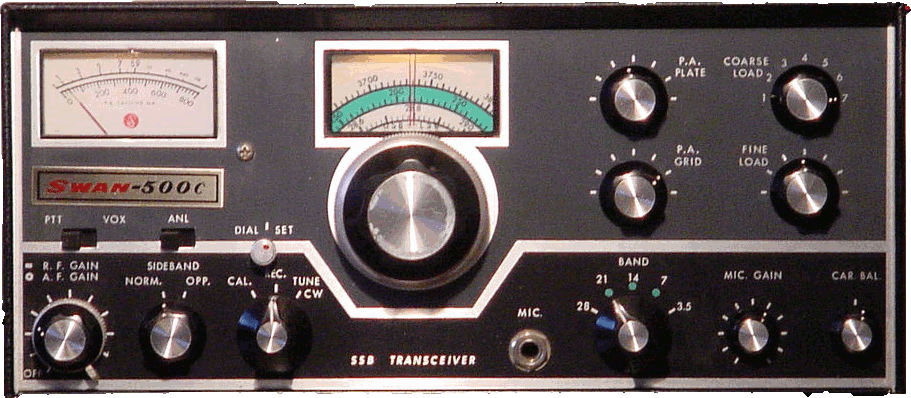
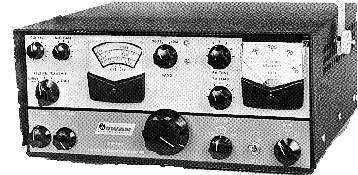
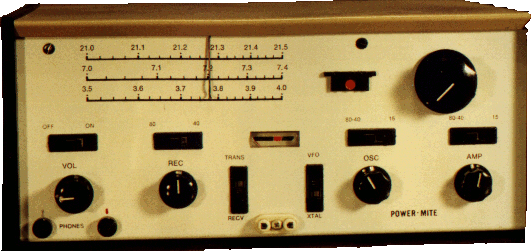
Left to Right:
Swan 500C, Swan 240, Ten Tec Power Mit 2
I took my Extra Class exam in April of 1981 and received my Extra Class license on May 18th, 1981 (One day before my 30th birthday!) and was issued the call sign KI7F which I currently hold. I was living in Aloha, Oregon at the time I received my Extra class license. I am currently happy with this ham radio call sign and intend to keep it!
Past Amateur Radio operating activities.
I have participated in various modes of amateur radio
communications in my past 30 years or so as a licensed radio amateur and
that includes CW, SSB voice, AM voice, RTTY, ASCII, Packet, ( Back in
the late 90's when living in the Provo, Utah area I was quite active in
Packet radio on the 2 meter band and for a while I set up an MSYS packet
BBS as well as a packet node PROVO:KI7F-2 with the help of my friend
Jon, KC7HUB who also ran an MSYS packet BBS station in Spanish Fork,
Utah.) but due to lack of packet radio activity in that area, I decided
to shut it down. My other interest in the past included operating on
Amateur Radio Satellites such as RS-10 and Oscar 8, QRP operating on HF,
Some dabbling in Fast Scan amateur television, and FM and FM repeater
operations. I have been involved in various HF and VHF contest in the
past few years such as the ARRL 10 meter contest, The Sweepstakes
contest, The ARRL VHF QSO Party contest , Oregon QSO Party, Earned
"Worked All States", The ARRL "Novice Round Up, just to name a few. and
always enjoyed participating in the yearly Field Day contest at various
places with different radio clubs, etc in the past few years.
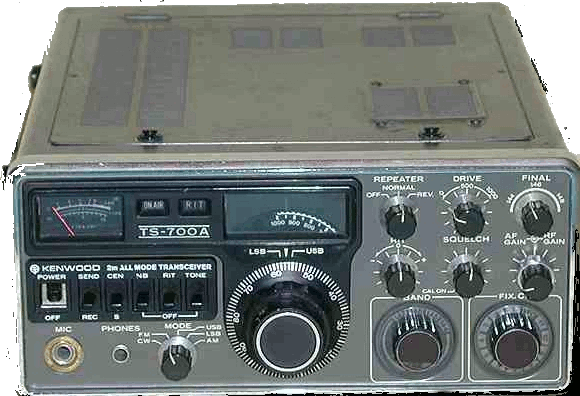
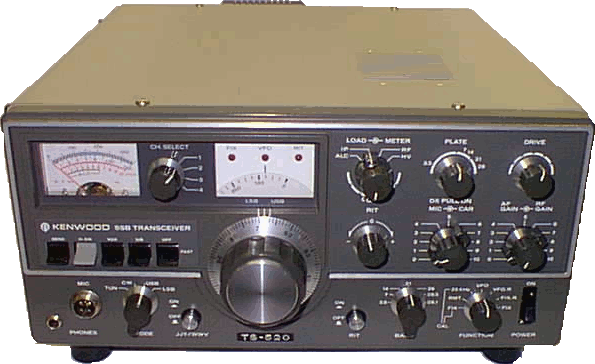
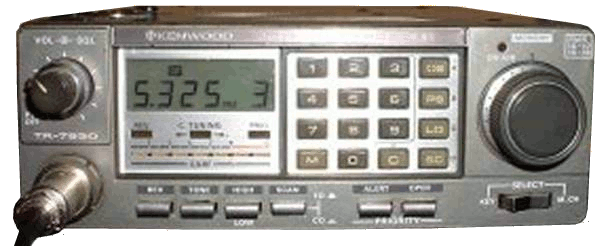
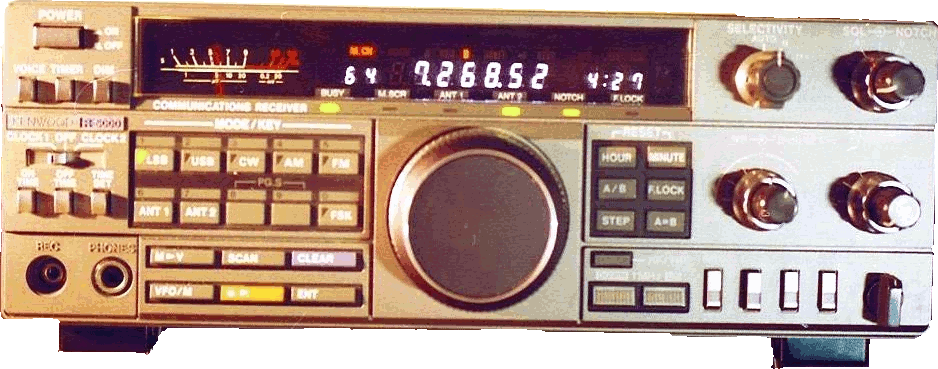
All radios in this group are made by Kenwood
Left to Right:
TS-700A, TS-520, TR-7950, R-5000
I remained some what active in my ham radio hobby during the six years that I served in the United States Navy and even had the chance to operate some 20 meter SSB from a destroyer vessel out at sea with on board ship equipment that they had in the auxiliary radio room and several crew members were able to talk back to their wife's and families back home via amateur radio "Phone patch".
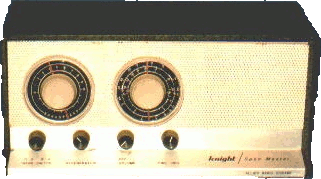
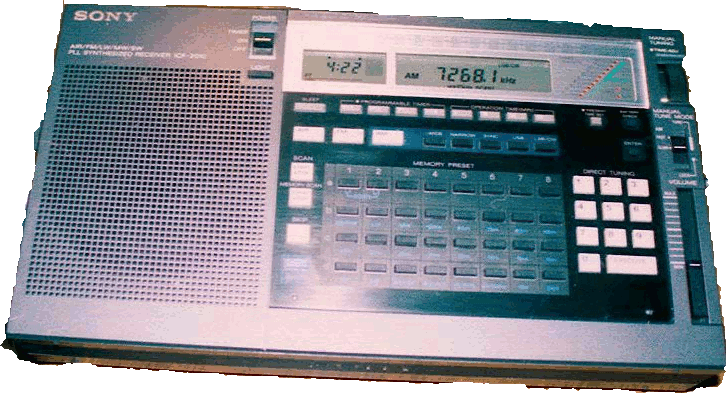
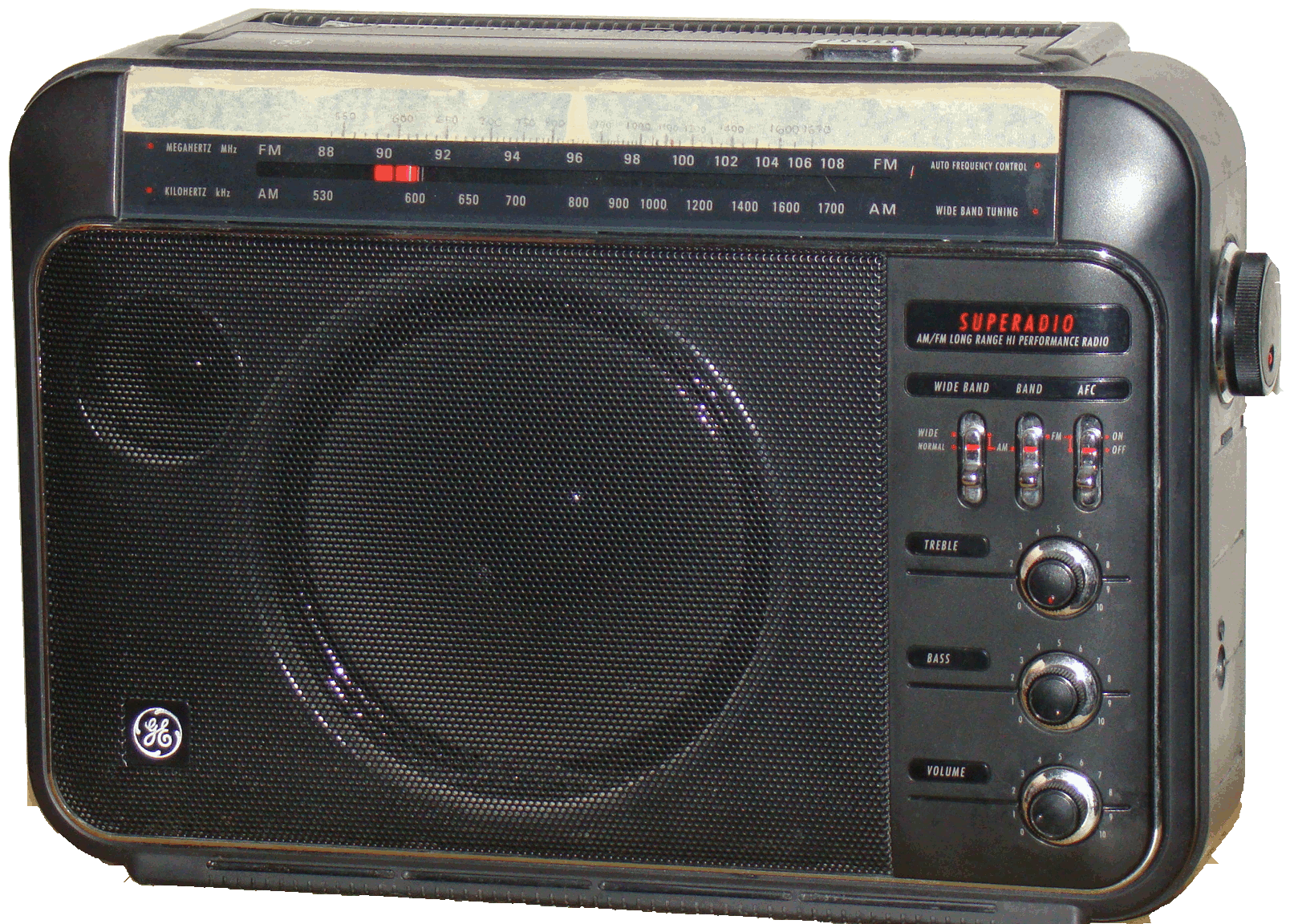
Left to Right:
Knight Kit Span Master, Sony 2010, GE Superadio III
A lot of navy bases I was station at had Amateur Radio club stations such as the one I operated from at the ASW training school in San Diego (W6DCM) and I had access to a club ham station when I was at the Agana Harbor Naval Station in Guam. I did a lot CW as well as voice SSB operations from those locations.
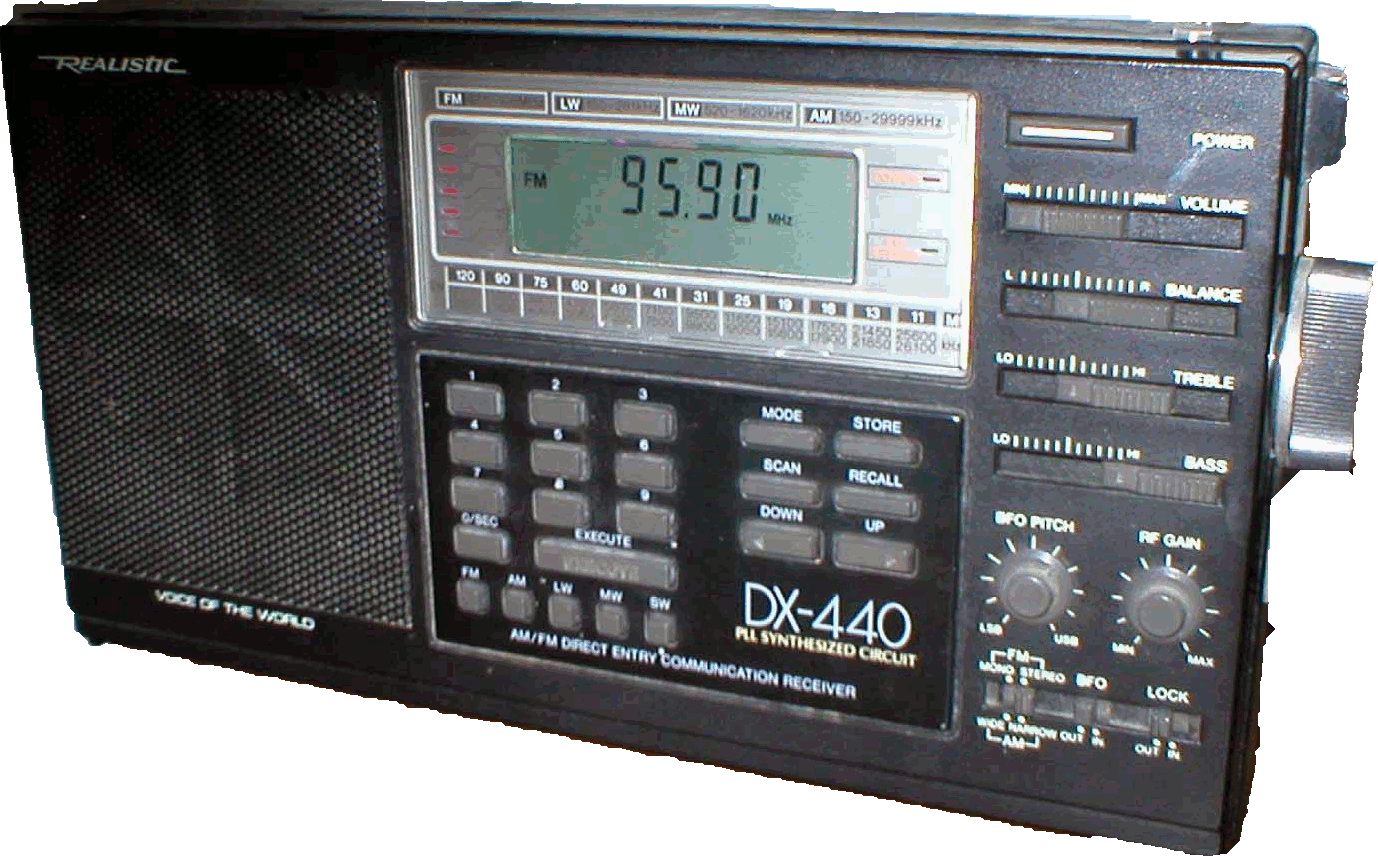
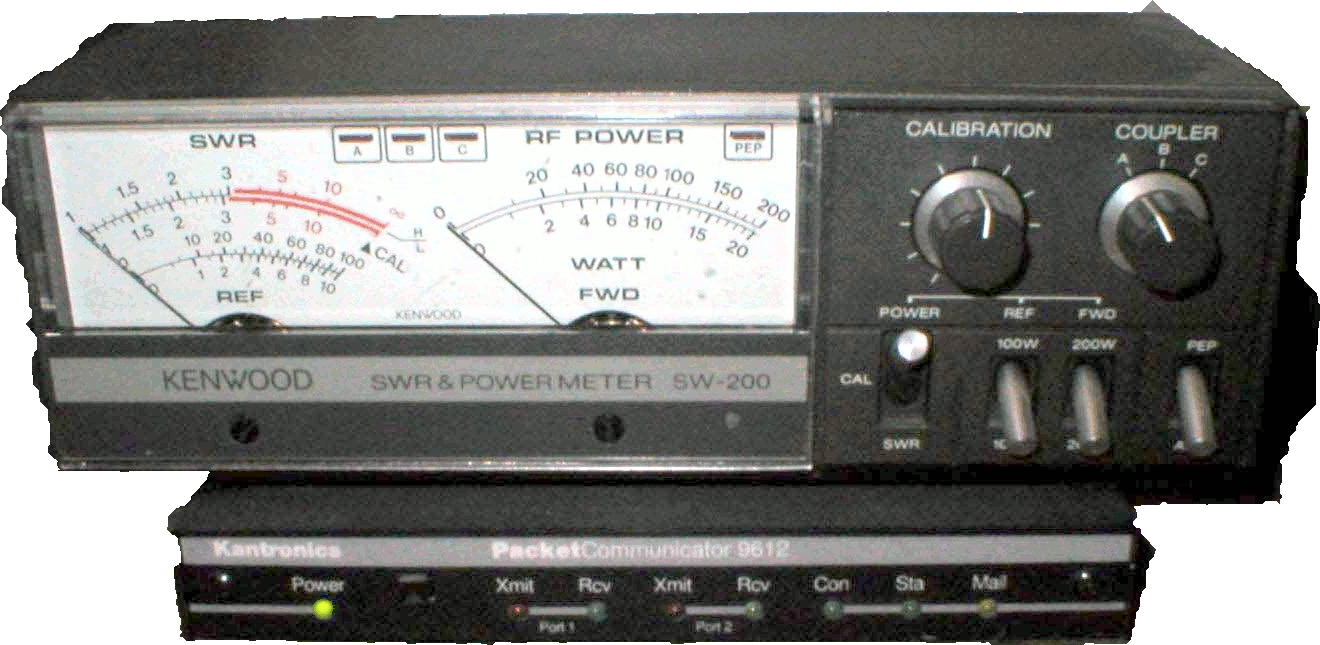
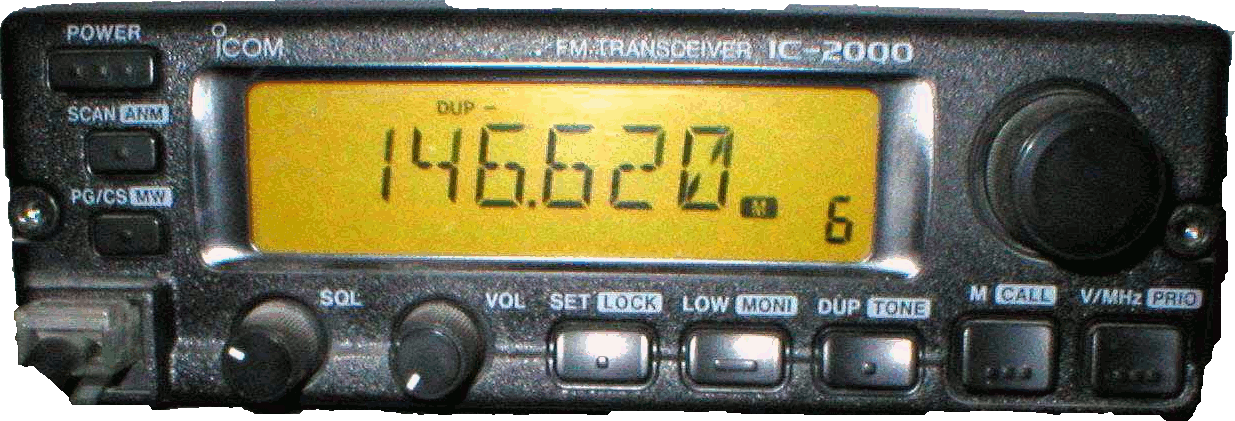
Left to right:
Realistic DX-440, Kenwood SW-200 SWR Meter and Kentronics KPC-9612 TNC, Icom IC-2000
Some of the Amateur Radio Clubs and organizations I used to belong to have been the American Radio Relay League (ARRL), United Radio Amateur Club (K6AA, San Pedro, California.) Christian Family Amateur Radio Network (CFARN) , Ham Radio Fellowhip of Calvary Chapel of Costa Mesa, California, World Association of Christian Radio Amateurs and Listeners (WACRAL), Western Country Cousins Amateur Radio Network (member 1338), The International Association of Airline Hams (Member 2345), California Award Hunters Club (Member 734), The Oregon Tualatin Valley Amateur Radio Club (OTVARC), Amateur Radio Relay Group, Inc. (Operating the South Saddle Repeaters Affiliated with Portland, Oregon ARES net.), Amateur Radio Public Service Corp as member of the Beaver State Net, San Diego Repeater Association (SANDRA), Amateur Radio Club of El Cajon, Calif, Benton County ARES, Tektronix Employee's Amateur Radio Club, DeVry Institute of Technology (Phoenix, Arizona) Amateur Radio Club and many others in the past 30 years which had me involved in various amateur radio public service activities and other club sponsored activities in various places that I had live at.
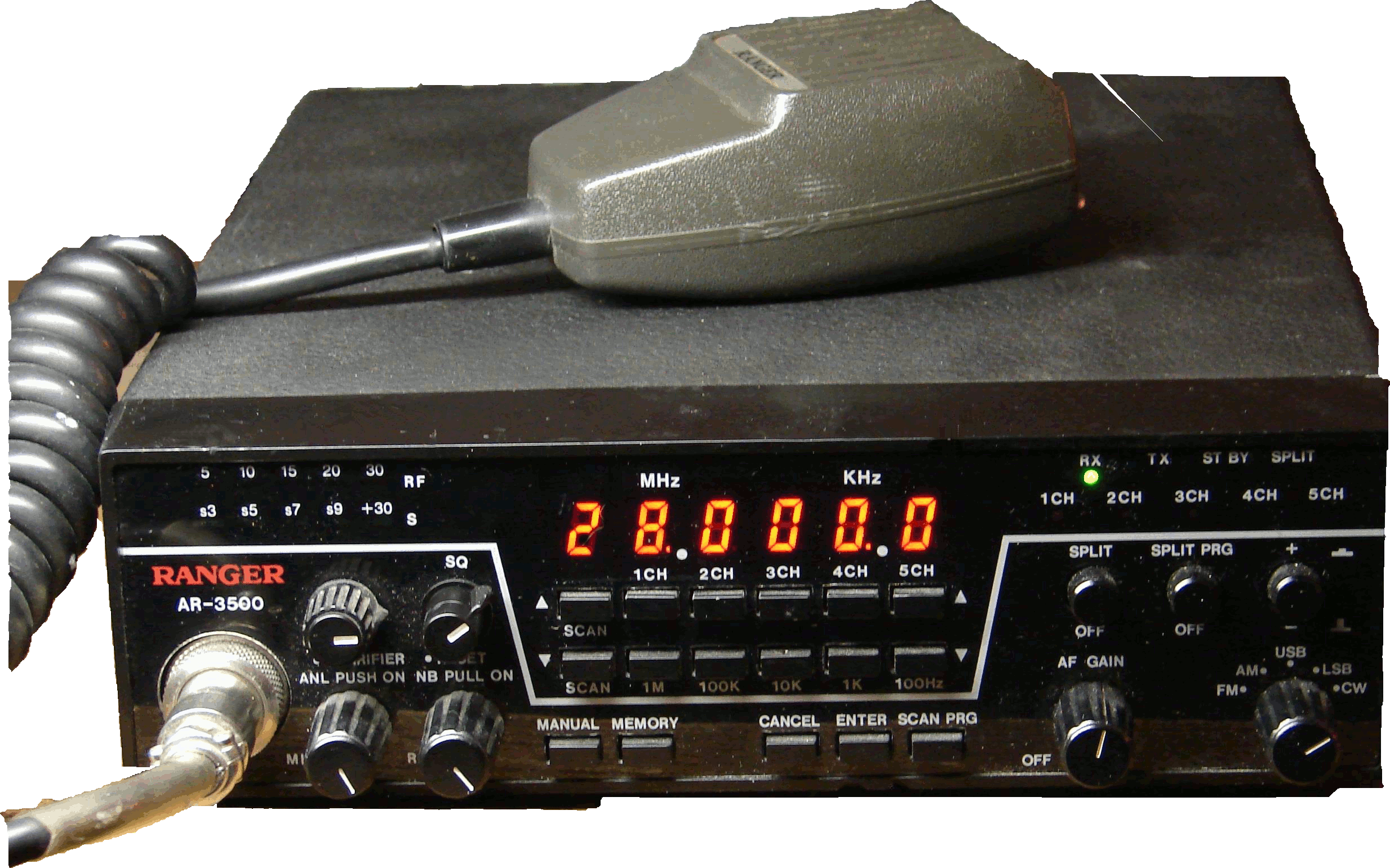

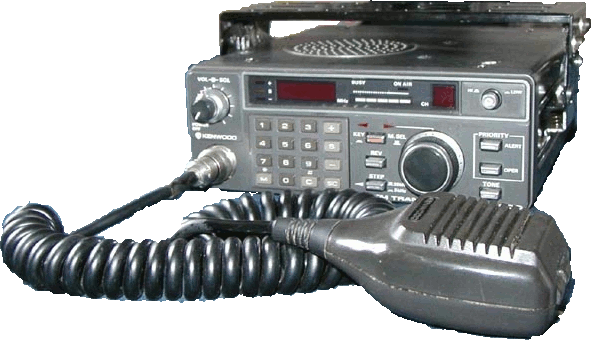
Left to Right:
Ranger AR3500, Yaesu Memorizer, Kenwwood TR-7800
While living in Provo, Utah in an apartment living situation, my amateur radio activity was rather limited at this location due to antenna limitations, etc. I did have 2 meter capability with an Icom ICH-2000H which I mostly keep on Packet radio running a packet node (PROVO:KI7F-2). I was running a full service packet radio MSYS BBS on 144.930 Mhz but decided to shut it down due to lack of activity in the area. I have a Ranger AR-3500 ten meter multimode mobile rig that needs some repair done in the final RF amp stage and once I get that fixed, I plan to operate some ten meter mobile. I used that Ranger AR-3500 when I was living down in the Los Angeles, California and was talking to stations all over the world on ten meters using that rig in my car!
I had a portable communication receiver made by Grundig, a Satelite 500, with a 16 foot long indoor wire antenna so that I can listen to hams and shortwave broadcast, etc. and I also use a GE SuperRadio III which I used with a Palomar amplified loop to listen to far away (DX) AM radio stations. If you are interested in a low cost portable AM-FM radio that has superb audio (AM stations sound really great on it!) and great sensitivity for listening for very far away (DX) AM radio stations and if you don't mind the analog tuning dial, I highly recommend the G.E. SUPERADIO III. I purchased mine at a K-Mart for around 48 dollars.
Current Amateur Radio Activities.
.

